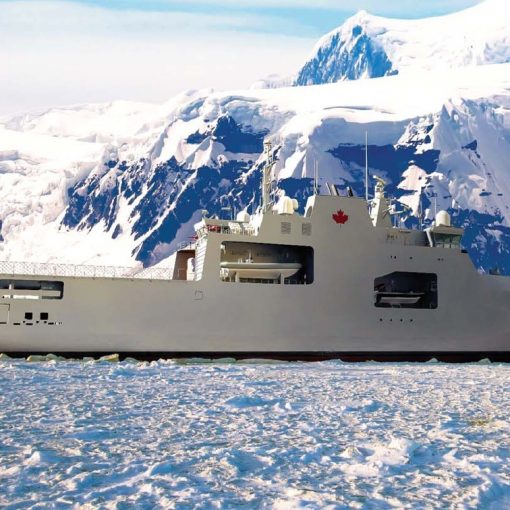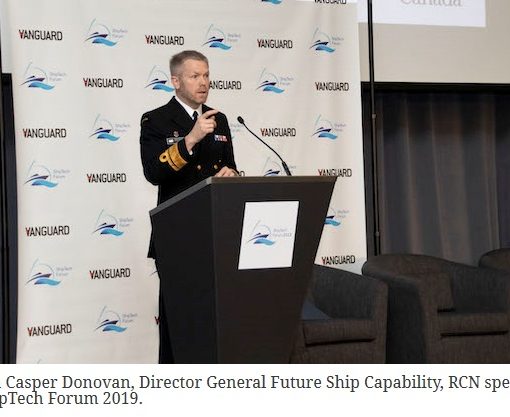Michael Whalen, a professor of marketing and international business at Mount Saint Vincent University, wrote a letter to the editor of the Chronicle Herald on 26 May and asserted “Home-grown shipbuilding [is] bound to be a boondoggle.” He suggested that two serious problems exist with the National Shipbuilding Procurement Strategy (NSPS). He claimed that the federal government has no idea how much it will cost to build ships and thus the long-term benefit to Canada of building warships in Canada is questionable. The CFPS Maritime Security Policy Program Research Team has examined these basic questions and statements and provides the following analysis to provide more details on the key points raised.
It may surprise some readers but most governments enter into shipbuilding projects without knowing detailed cost information. The design and construction of a warship is among the most complex of engineering tasks. Compare a car to a submarine, the most complex of warships: the average car weighs 1.6 tonnes, has about 20 subsystems, 500 suppliers, 17,000 parts to assemble and takes 36 hours to build. A typical diesel-electric submarine weighs 2400 tonnes, has about 100 subsystems, 1600 suppliers, 500,000 parts to assemble and takes 2,500,000 hours to build. Government cannot know the detailed cost of any new-build warship project at the outset but, like a family buying a car, must know what it wants, how much it can afford, and be prepared to do some work to see if an affordable solution is possible.
There is no question that considerable risks exist for Canadian ship design and construction projects. Canada has not built complex warships in over 20 years. The NSPS is currently offering a prudent, lower-risk strategy to develop the AOPS design to a level that will permit an accurate cost estimate. A recent contract signed by Irving Shipbuilding in March 2013 is intended to prepare all the production drawings, identify material requirements, and construct a test section. This will establish important design and build data from which to draw accurate cost estimates for the AOPS and reduce financial risk for its construction. Of course, the process may reveal that cost will constrain the number or capability of the ships, but the government and the shipyard will be in a better position to understand the options for moving forward and to finding a solution at an acceptable price.
Professor Whalen suggested that the shipbuilding projects will not create sustainable long term industry for Nova Scotia. This assertion is not supported by past history. Canada conducted detailed studies comparing the cost of Canadian and foreign warships after the conclusion of the Canadian Patrol Frigate Project. DND’s audit arm issued a report, entitled Chief of Review Services Report on Canadian Patrol Frigate Cost and Capability Comparison, that concluded the built-in-Canada Canadian Patrol Frigate ultimately cost only 7 percent more on average (roughly $28 million per ship) than seven other similarly sized foreign warships. The report states that 7 percent “at home” premium also created over 7,000 person-years of Canadian employment and established at least 12 Canadian companies that are still in business exporting complex marine systems to the navies of the United States, Israel and the United Kingdom today. A Canadian Association of Defence and Security Industries report, entitled “Sovereignty, Security and Prosperity - Government Ships - Designed, Built and Supported by Canadian Industry,” provides details on these companies and shows that some of them are located in Nova Scotia.
The audit study also quoted Forecast International, a U.S. publication that conducts an annual assessment of warship capability, noting that HMCS Halifax, lead ship of the class, was the subject of unstinting praise from the US Navy and was also considered a very satisfactory and a well-conceived design by the Directorate of Navy Construction of the British Ministry of Defence.
The benefits to building in Canada extend for the life of a ship. Building ships is the best preparation for the maintenance and repair through life, offering Canada considerable savings because the government owns the intellectual property in the design, which leads to lower costs for maintenance. A recent review of the NSPS by Dr. Eric Lehre, cites a 2009 study commissioned by Industry Canada from the engineering consultancy group Mott MacDonald that estimated ships built at cheaper foreign shipyards normally resulted in a 25 percent increase for in-service support costs after they were delivered. This is not insignificant because the in-service support costs over the life of a ship are typically double the cost to just build it.
The NSPS provides the roadmap and processes for the renewal of the naval and other federal fleets, a renewal that must be coordinated if Canada wishes to make optimal use of its shipbuilding resources. It is precisely this approach that will offer better value for Canadians and a sustainable strategic advantage.
Professor Whalen does identify an issue that deserves further study: the strategic thinking of the government surrounding shipbuilding and associated marine industries. The NSPS does not provide the strategic framework and context to fully understand the government’s priorities in the shipbuilding sector. Not much is said about smaller shipyards and nothing concerning commercial shipbuilding and marine work. This should be a concern for Canadians because the smaller shipyards and industries that support the marine sector in Nova Scotia, and elsewhere in Canada for that matter, represent a vibrant and important part of the Canadian economy.



